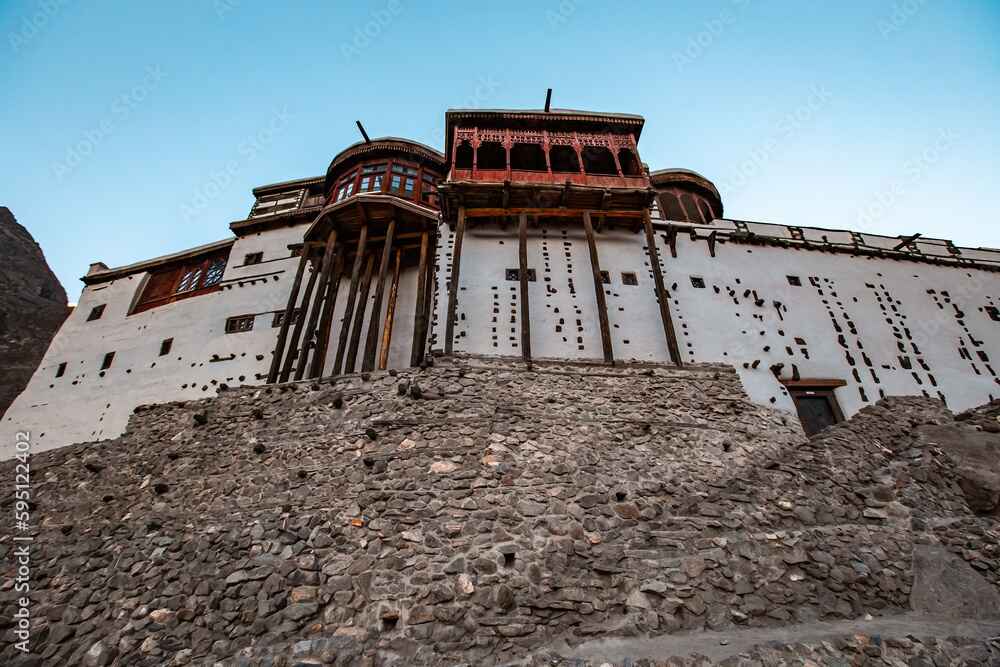Introduction
Nestled in the breathtaking Hunza Valley of northern Pakistan, the Baltit Fort is a symbol of the region’s rich cultural and historical heritage. This iconic landmark, perched atop a hill, offers stunning views of the surrounding mountains and valleys. Whether you’re a history enthusiast, a lover of architecture, or simply a traveler seeking adventure, Baltit Fort is a must-visit destination.
A Glimpse into Baltit Fort History
Baltit Fort has a fascinating history that dates back over 700 years. Originally built by the Mirs (rulers) of Hunza, the fort served as their residence and administrative center. Over the centuries, the fort underwent numerous renovations and expansions, blending Tibetan, Kashmiri, and Central Asian architectural influences.
Key Historical Highlights:
- Strategic Location: The fort’s elevated position provided a strategic vantage point to defend against invasions.
- Cultural Significance: Baltit Fort symbolizes the unity of different cultures and traditions that have shaped Hunza over centuries.
- Restoration Efforts: In the 1990s, the fort was restored by the Aga Khan Trust for Culture, preserving its historical integrity while making it accessible to visitors.
The Unique Architecture of Baltit Fort
Baltit Fort’s design is a harmonious blend of practicality and beauty. Its wooden balconies, intricately carved windows, and stone foundations showcase a remarkable fusion of form and function.
Architectural Highlights:
- Tibetan Influence: The structure reflects Tibetan-style architecture, especially in its wooden beams and carvings.
- Earthquake-Resistant Design: The fort’s design incorporates flexibility to withstand seismic activity, a testament to the ingenuity of its builders.
- Panoramic Views: From the top of the fort, visitors can enjoy breathtaking views of the Hunza Valley and the snow-capped peaks of the Karakoram Range.
Practical Information for Visitors
Baltit Fort Location:
- The fort is located in Karimabad, the capital of Hunza Valley, approximately 700 kilometers north of Islamabad.
- How to Get There:
- By Air: Fly to Gilgit and drive approximately 2 hours to Karimabad.
- By Road: Take the Karakoram Highway, a scenic but long journey from Islamabad.
Best Time to Visit:
- Spring (March to May): Enjoy blooming apricot trees and pleasant weather.
- Autumn (September to November): Witness golden foliage and clear skies.
Nearby Attractions:
- Altit Fort: Located just 3 kilometers away, Altit Fort is another historical marvel that complements the experience of visiting Baltit Fort.
- Eagle’s Nest: A viewpoint offering stunning vistas of the Hunza Valley.
What to Expect During Your Visit
Guided Tours:
- Knowledgeable guides are available to provide insights into the fort’s history and architecture.
- Tours typically last about an hour and are conducted in multiple languages.
Entry Fees:
- A nominal fee is charged for entry, which contributes to the maintenance of the fort.
Photography Tips:
- Visit during sunrise or sunset for the best lighting.
- Don’t miss capturing the intricate woodwork and panoramic views from the fort’s terrace.
Essentials to Carry:
- Comfortable walking shoes, as the approach to the fort involves a short uphill trek.
- Water and snacks, especially if you plan to explore nearby attractions.
- A camera or smartphone for capturing memories.
Altit and Baltit Fort: A Tale of Two Wonders
While Baltit Fort is renowned for its grandeur, Altit Fort holds its own charm. Together, these forts represent the architectural and historical legacy of the Hunza Valley.
Key Differences:
- Altit Fort: Older and simpler, it served as a stronghold and residence before Baltit Fort was built.
- Baltit Fort: Larger and more elaborate, reflecting the growing influence of the Hunza rulers.
Visiting both forts provides a deeper understanding of the region’s history and the evolution of its architecture.
Final Thoughts
A visit to Baltit Fort is more than just a journey through history—it’s an opportunity to immerse yourself in the stunning landscapes and vibrant culture of Hunza. From its captivating history to its awe-inspiring architecture, Baltit Fort is a testament to the enduring spirit of the people who built and preserved it.
So, pack your bags, head to the Hunza Valley, and let the magic of Baltit Fort transport you to another era. Don’t forget to explore the nearby Altit Fort for a complete historical adventure!
